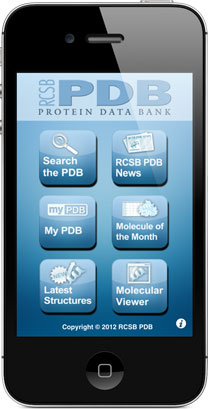A Personal View from Peter Hunt, Optibrium Ltd
When thinking of computational chemistry tools for mobile devices I ask the questions “why?” and “who should be interested”? This may sound somewhat negative but before one can suggest that something is worthwhile, perhaps one should at least think about the uses and for whom, after all we have survived as chemists, for several centuries, with just a pen and a piece of paper. There was a review on the same topic by Antony Williams on the RSC website back in 2010 (http://www.rsc.org/chemistry world/Issues/2010/May/MobileChemistryChemistryHandsFace.asp) and the list of mobile resources at the Click2Drug site from the Swiss Institute of Bioinformatics (http://www.click2drug.org/directory_Mobile.html) and these are both excellent sources for what is available. The majority of apps on mobile devices, on either Apple or Android platforms, are directed towards being educational tools and here one can see that the purpose and audience are clear. The ability to find information, compound or protein look-ups, target information, reagent ordering etc are useful facilities whether on a mobile device or not. (Examples are the PDB look-up apps like http://www.rcsb.org/pdb/static.do?p=mobile/RCSBapp.html , PubChem Mobile for database searching on Android https://play.google.com/store/apps/details?id=com.bim.pubchem&hl=en_GB or ChemSpider from the RSC on both iOS and Android platforms http://www.chemspider.com/about.aspx , SPRESImobile for reaction searching on iOS https://itunes.apple.com/us/app/spresimobile-by-infochem/id505308290?mt=8 , Mobile reagents universal (MORE) on both platforms http://www.mobilereagents.com/overview.html ).


For other purposes the arguments for computational chemistry on mobile devices are more vague, for example I do not see computational chemists using their iPhone to run high level ab initio calculations on a typical drug like molecule even if someone does “have an app for that” (eg iSpartan on iOS https://itunes.apple.com/us/app/ispartan/id534726646?mt=8 or Atomdroid for Android http://pubs.acs.org/doi/abs/10.1021/ci2004219, https://play.google.com/store/apps/details?id=org.atomdroid&hl=en_GB ).
Obviously the capabilities of the device have to be taken into account and for most uses the important factor is communication from the mobile device to a compute server (eg Mobile HyperChem level1 http://www.hyper.com/Default.aspx?tabid=521) although even this restriction is becoming less relevant as the memory capacity increases and more data is stored and searched on the device itself; effectively turning your mobile device into a mobile library (eg ChEMBL structure searching – https://itunes.apple.com/gb/app/elementaldb/id627422287).
Retina display not withstanding most graphical output is best viewed on the large monitors with 3D capabilities and glasses to match, but the screen resolutions of tablets are improving in leaps and bounds so this restriction will soon be a non-issue. So what should we be realistically doing on a mobile device? The visualisers and chemical sketchers are plentiful and have their place to help view active sites and note down new ideas. However there needs to be a certain level of interaction with the app (such as property calculation or model prediction as found in Asteris from Optibrium/ICD or Elemental from Dotmatics) that takes it above the capability of pretty picture generator or the pencil and paper as mentioned earlier. Although not strictly computational chemistry there are more eNotebook apps or web accessible versions of lab notebooks being created. The ability of a medicinal chemist to add information to a notebook entry, or design and order reagents for a new rapid analogue library whilst still being in the lab is one that would increase their productivity. The only issue then becomes the ability of the mobile device to withstand the rigours of a chemistry lab environment. An iOS iPad app directed specifically towards medicinal chemists is being developed by the RSC and is available in its early form from the Royal Society of Chemistry website (RSC.org). This will be interesting to follow to see how it progresses.
If I were to be able to request an app for creation then I can foresee an extension to the above for brainstorm or project meetings. Everyone would have their favourite mobile device and in rooms equipped with a computer projector the app would allow linking of these devices to the projected room computer acting as a hub. The linking should enable ideas for new molecules to be swapped between each device and the hub, gathering these new molecule ideas from within the room enabling better capturing of idea flow and progression of designs. Property calculations could be done from any of the mobile devices before submission of the ideas to the hub for comments by the other members of the meeting. If other information is needed to evaluate an idea (like a docking score perhaps or novelty estimate compared to the corporate collection or patent literature) then this could be submitted from the hub or set up for later submission. This scheduling activity then leads on to project management tasks such as allocating those ideas to those in the room for synthesis, or if the compounds already exist, submission of those compounds to the relevant assay submission tool, gathering data from in-house databases and interacting with visualisation tools to help find the SAR trends within.
The above dream enhances the utility of a mobile app from being a very personal, individual, aid into a collaboration and project management tool and also allows meetings to be set up so everyone can contribute in his or her own way.
